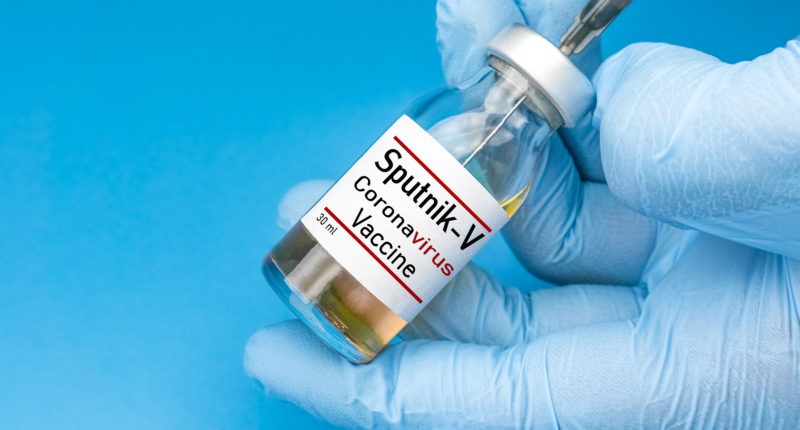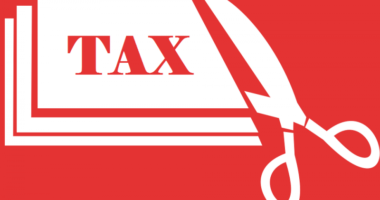According to Our World in Data, the number of doses administered to individuals in the country are 23 crore, out of which only 4.5 crore are fully vaccinated. This means that only 3.3% of the population have received both doses.
To top it all, there is even a gender disparity in our country’s vaccination drives. Reuters received a government statement that mentions that India has fully or partly vaccinated around 101 million men, 17% more than women.
Several federally controlled regions such as New Delhi and large states such as UP have experienced some of the most egregious inequities. Kerala in the south and Chhattisgarh in Central India have more women vaccinated than men. Shocked? Me too!
Extensive public confinements are not an optimal strategy for combating COVID-19 because they create a ‘see-saw’ between health and economic recovery. On the other hand, rapidly scaling up vaccination offers a one-shot – or two-jab – a solution that can deliver both health and financial recovery simultaneously and more quickly.
However, the vaccination rate in India is far too slow.
The story so far…
During India’s first COVID-19 wave, restrictions were eased quickly as the number of daily cases decreased, allowing for faster healing. Governments, however, are wary this time around. To be sure, caseloads are still well above the peak of the first wave, even if they are declining.
Maharashtra, Telangana, Odisha, New Delhi, Andhra Pradesh, Tamil Nadu, Kerala, Bihar, West Bengal, Punjab, Rajasthan, and Haryana, which were expected to liberalise their economies, have extended curbs – with conditional relaxations. Given the herd-immunity challenge, these are unlikely to be lifted entirely anytime soon.
Worryingly, India’s vaccination rate has only slowed in the last 2-3 weeks, falling from 1,666 per million in the last week of April to 1,463 per million in the last week of May, owing primarily to a lack of supplies. That means that only 3.3% of the total population is fully vaccinated, while 13% has received at least one jab.
Other countries…
In the United States and the United Kingdom, 35%-40% of the population is immunised, and more than 50% has received at least one vaccination. Given its substantial production capacity, China is on track to fully vaccinate its adult population by the end of 2021, according to an International Monetary Fund report.
Consumers with better vaccination coverage, i.e., nearly 40% of the population immunised, experience a quicker catch-up in economic activity. This is only natural, given that increased range reduces the risks associated with loosening restrictions and social distancing. It plays a significant role in reducing fear and allowing for the resumption of economic activity, as seen in the United States and the United Kingdom.
China’s narrative is a little different. Its turnaround and recovery of business confidence are owed to the recent increase in vaccination, the early containment of the virus, and macroeconomic stimulus.
Back to our motherland…
The economic recovery has been shaky, slow, and uneven – the government hopes to vaccinate the adult population by the end of 2021 fully. Given the challenges, this translates to covering half of the population, which is a tall order.
For starters, our population is enormous. Second, vaccine supplies are running low.
August’s supply problem is likely to be resolved as increased domestic production and imports begin to take effect.
However, once vaccine numbers and government acquirement increase, the next major challenge will be deploying them.
As per the National Library of Medicine, some of the main challenges that could appear at that stage include:
(a) Safe and guarded transport and delivery of vaccines.
(b) Equitable vaccination distribution to priority groups.
(c) Promoting vaccine uptake.
While India has done a good job with the first two, the government will need to focus on the third in order to cover the most ground in the shortest time.
Vaccine hesitancy could be a barrier in this case. As caseloads decrease, vaccine resistance may increase. As the study mentioned above suggests, there may be delays in the acceptance of newer vaccines as they enter the market.
So, how to tackle this situation?
The government will need to communicate clearly in order to raise awareness of vaccine security, side-effects and trust and maybe also provide encouragement. With the resistance of vaccines increasing in the US, local authorities have announced many incentives to encourage people to be inoculated, including lotteries, university bonds (for people aged 12 to 18), savings bonds, and cash payouts.
In all, our only safe bet is vaccination. But policy support for segments that have suffered the most or have suffered a second blow will have to be used until then.
Aside from increasing spending on health infrastructures, it is vital to increase income and extend employment assistance to smaller businesses, rural economies, services, and urban poor – the four segments affected by reimposing and extending economic activity restrictions. Higher medical expenses would also have increased the pain along with declining incomes.
Sputnik V – “As reliable as a Kalashnikov assault rifle”
The government has decided to grant emergency approvals to vaccines that are already in use in other countries. According to the statement, it was decided to “expand the basket of vaccines for domestic use and accelerate the pace and coverage of vaccination”.
It went on to say that vaccines approved by regulators in the United States, the United Kingdom, the European Union, and Japan would be given priority approval in India. The health ministry also stated that the first 100 people who receive such vaccines would be monitored for seven days before a wider rollout is permitted.
This means that Pfizer and Moderna vaccines may become available to Indians. However, the government has yet to provide any specifics.
Amid a deadly second wave of infections, India has approved the use of a third coronavirus vaccine. Russia’s Sputnik V has been deemed safe, and it functions like the Oxford-AstraZeneca jab known as Covishield, which is manufactured in India.
According to late-stage trial results published in The Lancet, Sputnik V provides approximately 92% protection against COVID-19.
The approval of Sputnik V came as India surpassed Brazil to become the country with the second-highest number of cases worldwide.
Developed by Gamaleya Institute in Moscow, the vaccine sparked some controversy when it was released before the final trial data. However, scientists claim that its benefits have now been demonstrated.
It employs a harmless cold virus as a carrier to deliver a small fragment of the coronavirus to the body. By safely exposing the body to a portion of the virus’s genetic code in this manner, it can recognise the threat and learn to fight it off without becoming ill. Following vaccination, the body begins to produce antibodies that are specifically tailored to the coronavirus. This means that the immune system is ready to combat coronavirus when it encounters it.
Is being different good? Let’s find out
In contrast to other similar vaccines, the Sputnik V jab uses two slightly different vaccines for the first and second doses, which are administered 21 days apart.
They both aim for the coronavirus’s distinctive “spike,” but they use different vectors – the neutralised virus that transports the spike to the body.
The idea is that using two different formulas strengthens the immune system even more than using the same version twice – and may provide longer-lasting protection.
It was not only effective, but it was also safe, with no serious reactions associated with the vaccine during the trial.
Some vaccine side effects are expected, but they are usually minor, such as a sore arm, tiredness, and a slight fever. There were no deaths or serious illnesses associated with the vaccine in the vaccinated group.
Sputnik V has been approved in 60 countries, including Argentina, the Palestinian territories, Venezuela, Hungary, the United Arab Emirates, and Iran.
Vaccine arrives in India – Hallelujah!
Following regulatory approval from the Central Drugs Laboratory, Dr Reddy’s Laboratories has begun inoculation with Russia’s COVID-19 vaccine, Sputnik V, as part of the soft launch in India. On May 14, Reddy’s administered the first dose of the vaccine in the Indian city of Hyderabad as part of a limited pilot programme.
While the second batch arrived on May 16, the company stated that additional shipments of the imported vaccine jabs are expected in the coming months.
In collaboration with six manufacturing partners in the country, Reddy’s intends to meet regulatory requirements to ensure a timely supply of the vaccine.
“What did it cost?” asked Thanos
The imported doses of Russia’s Sputnik V COVID-19 vaccine will cost Rs 995 per shot, according to Dr Reddy’s Laboratories, the company’s partner in India. The price includes a GST of 5% on every dose. However, the vaccine doses that will be manufactured in India are expected to be less expensive.
Keep a lookout for vaccine slots
A fixed number of doses will be manufactured in June and will thrive in the market. Sputnik V will be available in Indian markets by next week, according to NITI Ayog. The process of getting vaccinated from this particular vaccine online may begin soon. There has been no official word on how the Indian government intends to handle Sputnik V vaccinations.
Speed is the absolute need of the hour. If we are indeed on the road to the December vaccination target, recovery should start in the third quarter once there is better clarity and progress on vaccinations, and strengthen into the fourth quarter of this fiscal and the first quarter of the next.
For any clarifications/feedback on the topic, please contact the writer at sujaini.biswas@cleartax.in

An Editor by day and a sloth by night…I would love to eat and sleep throughout the day if given a chance…I enjoy reading and love my job and my team at ClearTax.





